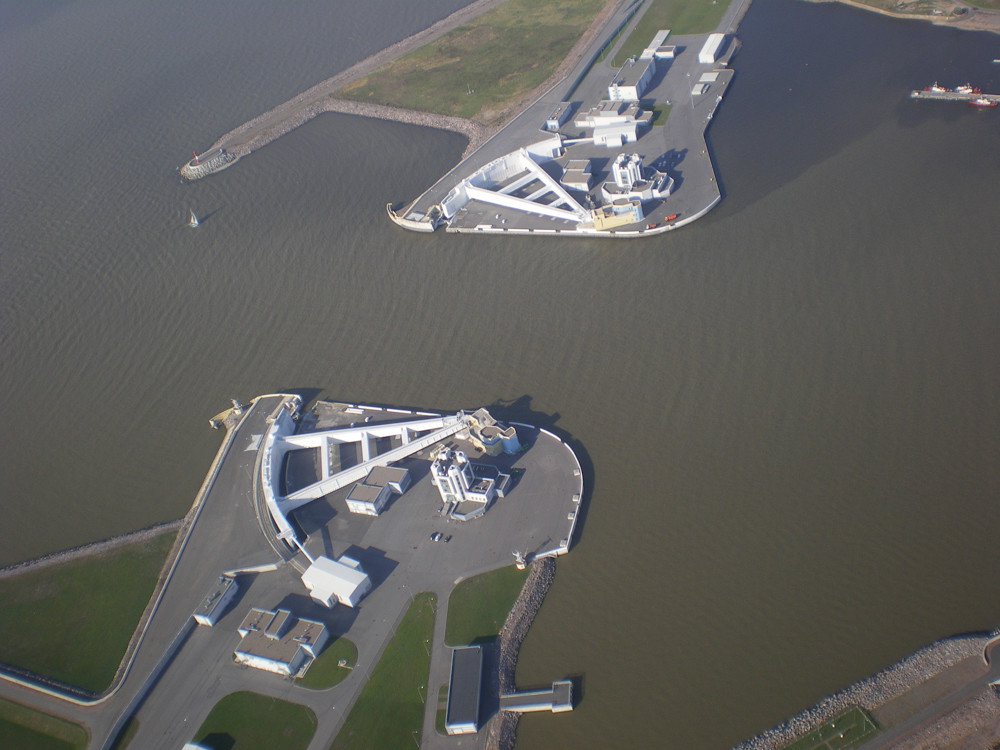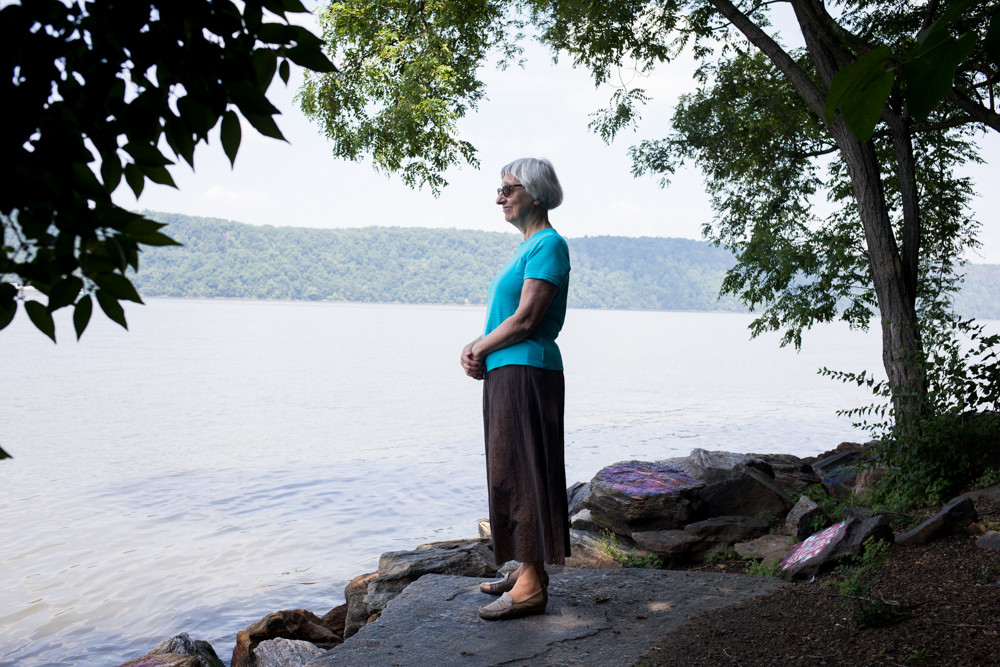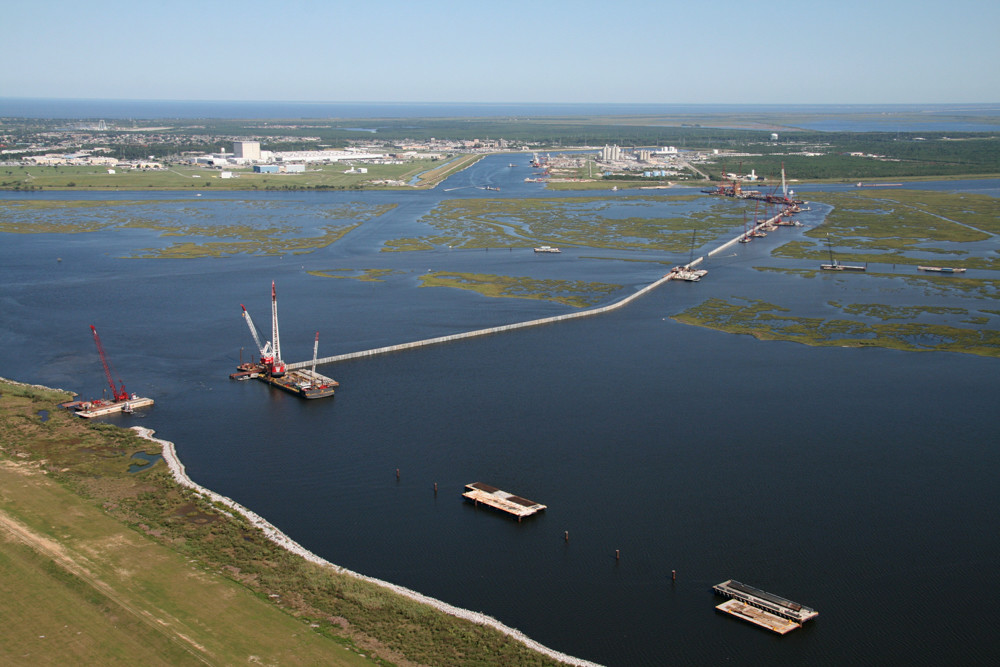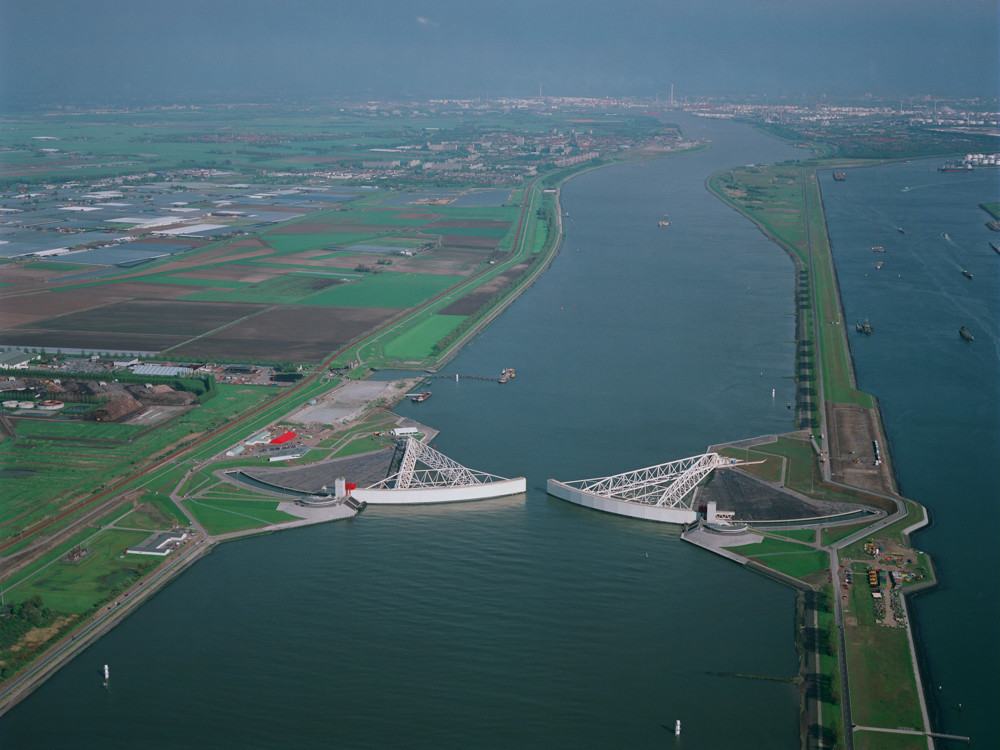A brilliant solution, or a terrible problem?
The Corps of Engineers says flood barriers will protect the Hudson River. Advocates say they will kill it.
The Hudson River could be on the brink of its demise. At least according to some environmentalists dreading construction of massive storm barriers the U.S. Army Corps of Engineers might build on waterways around the city.
The barriers are a response to 2012’s Hurricane Sandy, and are designed to prevent flooding from future super storms — but critics claim they also could have devastating effects on communities along the river from Manhattan to Troy.
The Army Corps is considering six different plans involving a combination of in-water barriers in New York Harbor as well as land-based floodwalls, dunes and levees, all intended to manage coastal storm flood risk. But opponents — including John Lipscomb, advocacy vice president for environmental group Riverkeeper — say some of the proposals pose an existential threat to the Hudson.
The river’s health depends on natural tidal ebb and flow, Lipscomb said, which in-water barriers would obstruct.
“Everything in the Hudson has reached an equilibrium based on millennia of tides day in, day out,” Lipscomb said. “The amount of tidal exchange in the harbor and into the lower Hudson is directly proportional and directly related to the physical opening of the river where it meets the sea.”
A fix for the future
Of the Army Corps’ proposals, Lipscomb said, all but one include physical barriers built in the water in the inner and outer harbor, which, when closed, would block the river entirely.
And because the barriers’ gates are but a small fragile part of the structure, even when they’re open to allow ships to pass, he added, “the historic connection between the sea and the river is going to be enormously altered and restricted.”
But it’s not just the Hudson that’s at risk. Also affected are various rivers in New Jersey like the Raritan and the Passaic, as well as smaller water bodies like the Bronx River and Westchester Creek. Furthermore, Lipscomb said, New York Harbor is an integral part of the water quality and aquatic ecology of western Long Island Sound.
“All those water bodies are going to see a dramatic change if tidal mixing and tidal transport is reduced,” Lipscomb said. “There’s going to be a putrefaction of these water bodies because they’re not going to be able to lose and shed the contaminants that the city gives to them from sewer overflows and from the streets and from industry.”
Which could be very bad news for fish, too, from striped bass, to Atlantic sturgeon, to herring and other species essential to the Hudson estuary.
“Estuaries are where it all happens,” Lipscomb said. “Estuaries are what make the ocean environment work.”
What’s more, Lipscomb said, in-water barriers fail to address what he sees as a much greater long-term threat — sea level rise.
“The closing of ship gates will only go up as sea level rise increases, because it’s going to take smaller and smaller storms” to prompt gate closure, Lipscomb said.
An expensive proposition
The city’s Economic Development Corp., expressed its own reservations about building storm surge barriers in a 2013 report placing construction price tags at well over $20 billion, plus significant yearly operating and maintenance costs that could run as high as $2.5 billion.
And, they’d likely require several decades to complete.
A more feasible, cost-effective measure, Lipscomb said, are shoreline barriers like dikes, levees and floodwalls that, with or without massive in-water structures, “will have to be built to protect any low-lying area that we don’t want to retreat from.”
Not only would they protect against flooding, Lipscomb said, they’d leave the river free to flow and thrive.
If Lipscomb is deep in the weeds studying what he sees as in-water barriers’ potentially apocalyptic impacts, Iris Hiskey Arno, co-leader of NYCD16-Indivisible’s environmental committee, says the Army Corps’ plan caught her off-guard.
“The issue of these barriers seemed to come out of nowhere,” Arno said, “at least in terms of the public hearing anything about it. I do think we all need to be paying attention and be ready” to speak out on the issue.
“Communities and individuals up and down the river have fought so hard over so many years to clean the river and restore its beauty and vitality,” Arno added. “The majority of these storm surge barriers would be an enormous step backwards, if not an actual death knell over time.”
Protecting life
Through years of living by the Hudson, Carol De Angelo — director of the office of peace, justice and integrity of creation for Sisters of Charity of New York, located on the College of Mount Saint Vincent’s grounds — has developed a passion for protecting the river from potentially destructive human-driven projects.
“I see most of these proposals really hurting not just the fish and the lifeforms in the Hudson River, but in many ways changing the nature of the Hudson River, which in a very real way will affect us,” De Angelo said. “As we move into the future, we have to realize how interconnected we are as human species with other lifeforms. And that includes rivers.”
Yet, it’s important to keep in mind the Army Corps’ proposals are still just proposals.
“It could be that none of them are either environmentally acceptable or feasibly acceptable,” said Michael Embrich, a spokesman for the Army Corps’ New York district office. “At this time, we do not have enough data to comment on proposed alternatives.” But they will this month, after hearing from residents, and processing and analyzing data collected during their feasibility study.
In the near future, Riverdale residents, up on a hill, and in other similarly elevated areas, may have less to worry about than shoreline dwellers when it comes to flooding.
Still, Lipscomb said, “the death of the river is not good for anyone. If a person values a healthy planet, then a living and healthy Hudson right outside their windows should be a priority.”















